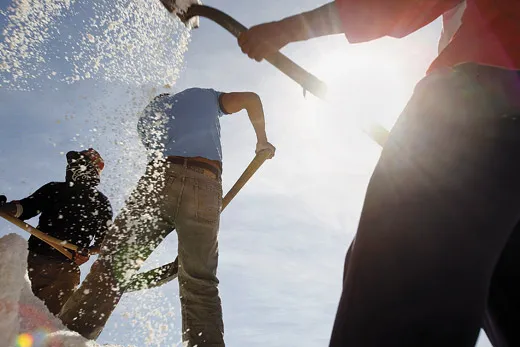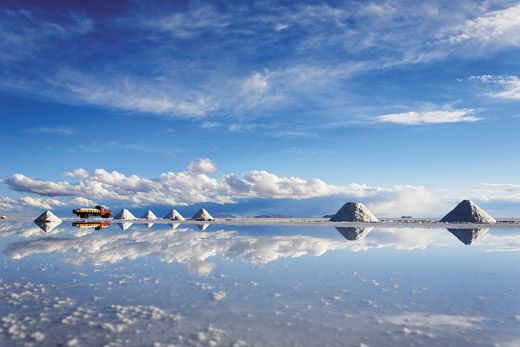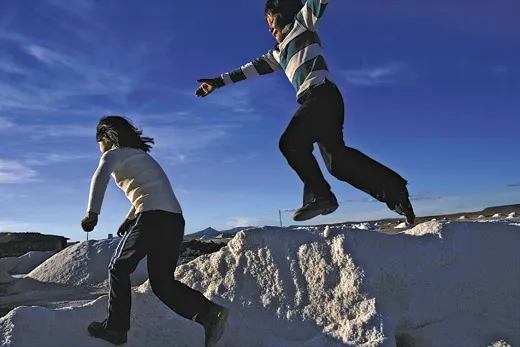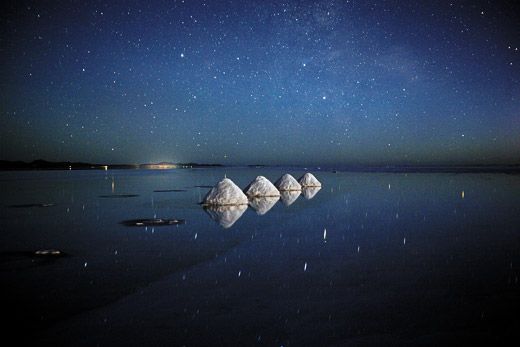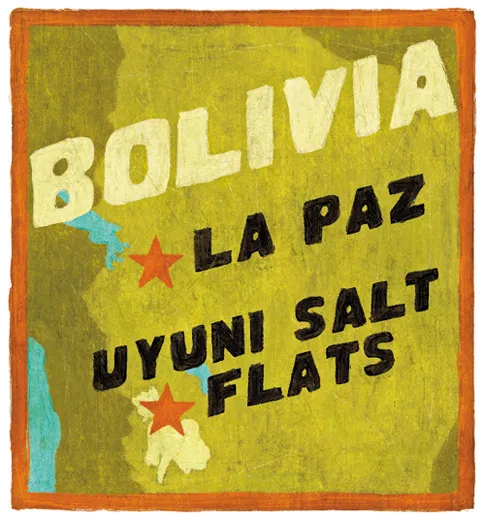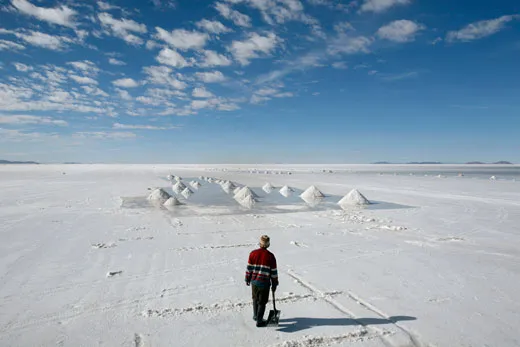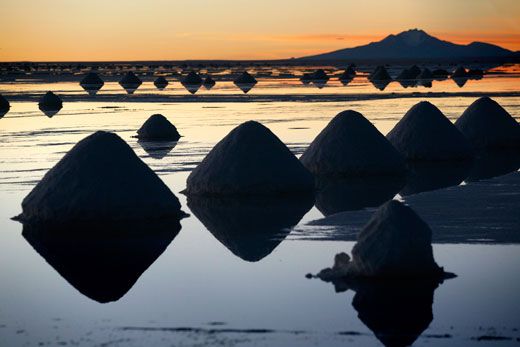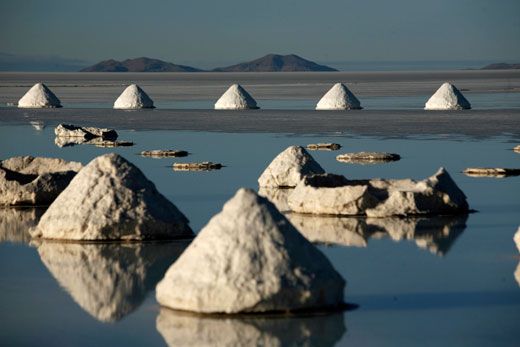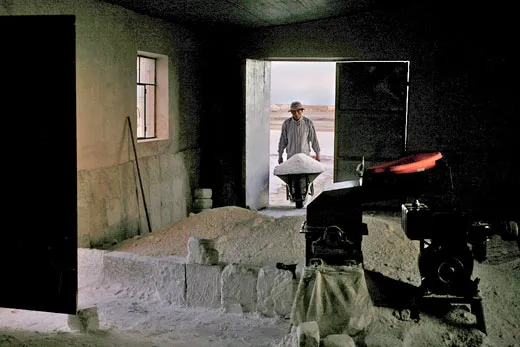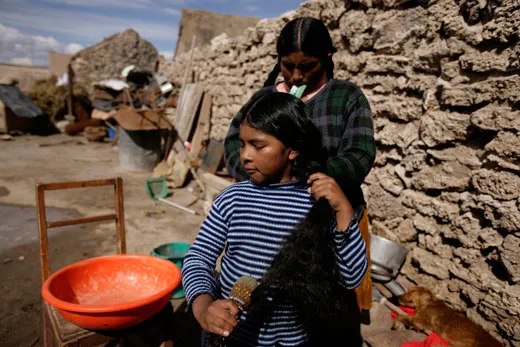A Tasting Tour of Salts Around the World
Food critic Mimi Sheraton samples the different kinds of the world’s most ancient and essential ingredient
/https://tf-cmsv2-smithsonianmag-media.s3.amazonaws.com/filer/Salt-Flats-Bolivia-631.jpg)
Whenever I handle salt—to season food, pickle cucumbers, cure fish, scrub cutting boards, polish copper pots or thaw ice on my front steps—I experience a split-second cinematic flashback to a few salt sources I have visited. Each has astonished me with its grandeur and the human labor it entails. The scariest experience occurred some 30 years ago when I rode an elevator down into the salt mines on Avery Island in Louisiana, home of the fiery Tabasco empire and also of an enormous, ancient salt dome. Having donned helmet, gogglesand toe guards over shoes, and signed a waiver saying no one would be blamed for my death, I was driven in a Jeep through alleys that linked cavelike rooms carved of mined earth salt, all in a dismal gray haze that suggested a gothic winter afternoon.
Far more cheery were the sparkling white salt flats laid out along the Mediterranean coast of Trapani in Sicily. Under the blazing sun, seawater evaporated, leaving the formed salt crystals to be raked off from the long, rectangular beds that resembled giant skating rinks of frozen milk.
In Israel, I soaked in salt, bobbing buoyant as a cork in the Dead Sea. Valued for its curative minerals, this salt, as bath crystals, is said to soak aches and pains away. That dense water is so salt-saturated that nothing lives in it very long, and thereby lies a key to the process by which salt acts as a preservative: it draws moisture out of living things, bacteria included, killing them so they cannot spoil the food.
However impressive, none of these venues match Bolivia’s Salar de Uyuni, the world’s largest, starkest salt flats (a scene I have yet to experience). The photographs here only hint at the drama of the horizon-to-horizon salt-encrusted landscape of hills, drifts and fields that is considered one of the planet’s purest and least polluted. The salt is fine-grained, with an almost floury softness. The salar covers some 4,086 square miles atop a virtual ocean of brine that contains between 50 and 70 percent of the world’s lithium. This unending expanse reflects the sky, taking on a veil of blue. Of the ten billion tons of salt in this salar, 25,000 tons are harvested annually, providing arduous work and intermittent play for adults and children in nearby villages such as Colchani. After school, children earn meager cash by raking the salt into one-kilogram bags, $5 a day being the fee for harvesting 2,500 kilograms.
In New York, perhaps the biggest surprise—and disappointment—was that despite my search through at least a dozen upscale food shops, not one had the Bolivian salt, this despite its uniquely fine table-salt grain and the reputation of the site. I ordered it from La Paz. (Learn how to get this and other salts at Smithsonian.com/salt) When it arrived it was exceedingly pleasant to the touch, and flowed like gossamer through my fingers. Its intense, deep-sea salty flavor finished with only a slight flush of bitterness on the palate.
So essential is salt as flavor enhancer, preservative, life sustainer and purifier that it has been celebrated in myth, superstition and religion as far back as ancient times and probably before, a story intriguingly documented by Mark Kurlansky in his history Salt: A World History. Despite its many varied uses and associations, salt—sodium chloride (NaCl)—is most valued by food lovers for the lively interest it adds to everything we eat, cakes and desserts included, whether presented in disposable paper packets or in a gold, enamel and jeweled vessel such as the 16th-century Benvenuto Cellini saltcellar in Vienna’s Kunsthistorisches Museum.
Increasingly in the high-fashion food world, the flavor of salt itself is getting attention, by way of cheese-and-wine-type tastings of salts from various parts of the world. The salts differ in crystal forms and subtle overtones of minerals, bitterness, saltiness and sharpness. Colors—sea-foam green, mauve, pink, red, brown and black—have a special cachet (although Kurlansky states that whiteness has been the traditional prize, and colors really are due to “dirt” that has not been removed). Such tastings were introduced by Thomas Keller about 15 years ago as part of the degustation at the French Laundry in the Napa Valley and continue there, as well as at his New York restaurant, Per Se, where the staff recently staged such a comparison for me.
That complemented an even larger sampling at home, for a total of 13: the sparkling powder from the Bolivian salar; Himalayan mineral salt; gray salt—sel gris—from Brittany; English Maldon; charcoal-black and brick-red salts from Hawaii; and samples from Trapani, Cyprus and California, Jurassic salt from Utah, and the celebrated fleur de sel—flower of salt—from Ibiza in Spain and the Camargue and Brittany in France. The last is said to be harvested by gatherers—paludiers—who hand-rake at sunset, for a light, airy salt of exceedingly delicate flavor and, like most sea salts, with some 80 minerals intact.
Tasting salt with food proved less revealing than trying it alone, which could be palate numbing. I asked for advice from my guru on such subjects, Linda M. Bartoshuk, a sensory science professor at the University of Florida’s Center for Smell and Taste. She advised that between each tasting, I rinse my mouth with body-temperature water and wait a minute or two. I did repeated tastings over a few weeks, always coming to the same conclusions. All of these salts are expensive and delicate and are meant for finishing dishes, not cooking. For that, professional chefs favor unadulterated, kosher coarse salt.
The Himalayan mineral salt harvested from mountain mines was my hands-down favorite, partly for its silvery pink glow, which suggested crushed rose quartz, combined with its mild, fresh salinity.
Color aside, the fleur de sel from Brittany and the Camargue would vie for first place, with its virtually identical, beautifully sparkling, diamond white grains and quintessential sea breeze flavor, with only the least tang of bitterness. The grains were so delicate they are perhaps wasted on the lustiest foods, such as roasted meats and poultry, and more suitable to salads and fish. Fleur de sel from Ibiza was a bit more intensely salty and softer in texture but still quite pleasant.
Sel gris, from Brittany, was almost as delicate as the fleur de sel, but a bit softer in texture. It had just enough mineral underpinnings to make it a more effective seasoning for meats, as it is used by Eli Kaimeh, the chef at Per Se.
Maldon salt, though beautifully glittering and glassy, had an overpowering bitterness, but the crunchy texture of its large flakes makes it a lovely contrast to paper-thin slices of raw scallops and tuna.
Hawaii’s black and vermilion salts were salty all right, but without special distinction other than their colors.The salts from California and Utah were less distinguished than the others and had slightly more mineral accents but were still preferable to processed table salt.
Trapani salt was especially snowy and fine-grained and would be very good sprinkled on tomatoes or raw cucumbers, as would the larger, slightly duller flakes from Cyprus.
“Ye are the salt of the earth: but if the salt have lost his savour, wherewith shall it be salted?”—Matthew 5:13
Luckily, we have yet to face that dilemma. But consider that, according to research done by Linda Bartoshuk and others, each of us perceives saltiness in different measure. What is salty for me, may not be for you. That makes the common admonition in recipes “Salt, to taste” a precarious phrase, indeed. It’s also why salt should always be at the table, despite chefs who think otherwise in their attempt to wrest control from diners.
Ivan Kashinsky and Karla Gachet produced Historias Minimas, a book on traveling from the Equator to Tierra del Fuego.
